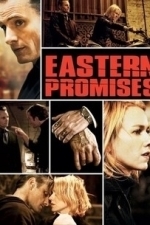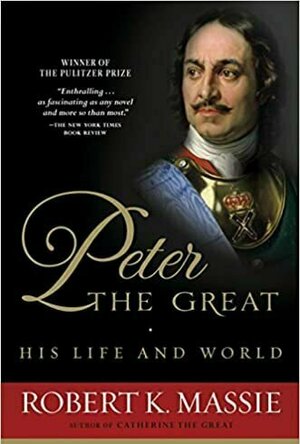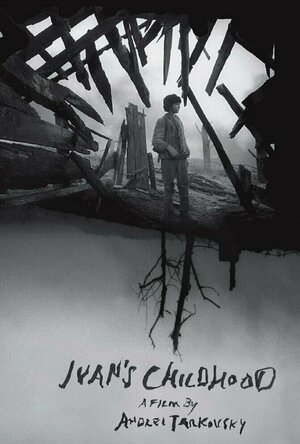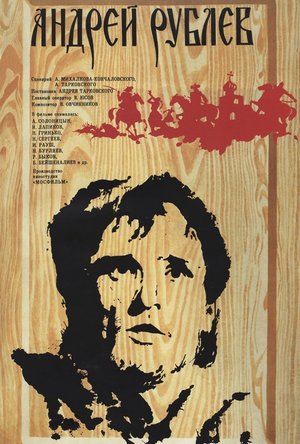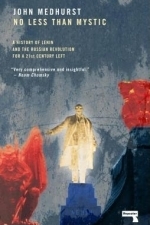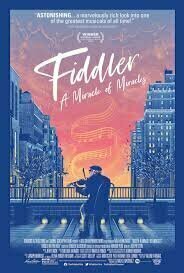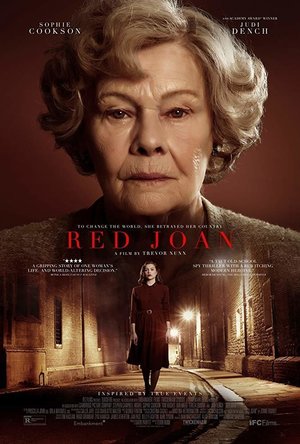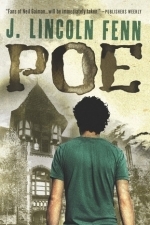Search
Search results
Dean (6927 KP) rated Eastern Promises (2007) in Movies
Feb 25, 2018
This is very similar to A Histroy of Violence with the same director (David Cronenberg) and Viggo Mortensen teaming up again. It is just as violent and possibly more bloody and graphic. The acting is of a very good standard and although it is a bit slow at times you are likely to be engrossed in the story too much to notice.
A midwife delivers the child of a young Russian girl who dies at birth. Trying to trace her relatives she gets her Russian uncle to translate her diary which only uncovers a look into the life of the Russian mafia in London. If you liked A History of Violence, The Godfather you should really like this film.
A midwife delivers the child of a young Russian girl who dies at birth. Trying to trace her relatives she gets her Russian uncle to translate her diary which only uncovers a look into the life of the Russian mafia in London. If you liked A History of Violence, The Godfather you should really like this film.
Christiane Amanpour recommended Peter the Great: His Life and World in Books (curated)
Daniel Lopatin recommended Ivan's Childhood (1962) in Movies (curated)
Daniel Lopatin recommended Andrei Rublev (1966) in Movies (curated)
Hazel (1853 KP) rated No More Than Mystic in Books
Sep 23, 2017
Russian Revolution
I received this book for free through Goodreads First Reads.
No Less Than Mystic: A Story of Lenin and the Russian Revolution for a 21st Century Left by John Medhurst is an in-depth historical and political insight to the truth about what really happened in Russia before, during and after the Bolshevik insurrection of October 1917. Beginning with the end of the Tsars rule and ending with Stalinism, Medhurst unearths the fact from the fiction, challenging the information the world has been led to believe.
As mentioned in Medhurst lengthy introduction, previous books on the subject are often biased and inaccurate. Swayed by political beliefs, authors and historians often pass judgement by using the information they have chosen to believe, dismissing anything that goes against their viewpoint. In this book, Medhurst filters through these false histories, preferring to cite from publications written at the time rather than those penned by people who did not witness the events between 1903 and 1921.
Medhurst’s narrative is more political than historical, often going off on tangents. In order to for the reader to obtain some sort of connection with the events described, the author contrasts them with more recent occurrences that readers may have observed or at least understand. These include the British miner’s strike, feminist movements, the Greek economy and a variety of other capitalist struggles.
The Russian revolution is a complex affair that cannot easily be condensed. As a result, No More Than Mystic exceeds 600 pages and covers every event, no matter how big or small, that contributed to the rise of USSR. Russia was a dangerous place to live during the 20th century, particularly when Leninism spiralled into Stalinism. However, Leninism was not all the history books make it out to be.
During GCSE History, one teacher led his class to believe that Lenin was good and Stalin was bad, however, the reality was much more complicated than that. Lenin was not the good guy that many painted him to be. Thousands died as a result of his policies from both execution and starvation. Yet, at the same time, Medhurst tries to point out the reasoning behind the ideas of the communist rulers, refusing to give a personal opinion without laying bare both sides of the argument.
Although this book is accurate and educational, it is not the easiest to sit down and read. Extensive chapters full of mind-numbing information detract from the comprehensive insightfulness of the content. Notwithstanding the fact that the inclusion of contrasting capitalist examples helps the reader to establish some form of familiar ground, the sudden changes in topic, location and time period are often confusing and hard to follow.
No Less Than Mystic is for the intellectual person with a great interest in 20th-century Russian history and communist affairs. Without any prior education on the topic, this book will not mean anything. It attempts to challenge the ingrained beliefs people have about what happened during the Bolshevik insurrection. Those who do not know anything will not benefit from the confronting enlightenment.
In all, No Less Than Mystic is a well-researched academic text that brings a fresh history of Lenin and the Russian Revolution. Those who want an unbiased truth need to read this book and be sceptical about any other on the topic. In order to form opinions, one must know the facts.
No Less Than Mystic: A Story of Lenin and the Russian Revolution for a 21st Century Left by John Medhurst is an in-depth historical and political insight to the truth about what really happened in Russia before, during and after the Bolshevik insurrection of October 1917. Beginning with the end of the Tsars rule and ending with Stalinism, Medhurst unearths the fact from the fiction, challenging the information the world has been led to believe.
As mentioned in Medhurst lengthy introduction, previous books on the subject are often biased and inaccurate. Swayed by political beliefs, authors and historians often pass judgement by using the information they have chosen to believe, dismissing anything that goes against their viewpoint. In this book, Medhurst filters through these false histories, preferring to cite from publications written at the time rather than those penned by people who did not witness the events between 1903 and 1921.
Medhurst’s narrative is more political than historical, often going off on tangents. In order to for the reader to obtain some sort of connection with the events described, the author contrasts them with more recent occurrences that readers may have observed or at least understand. These include the British miner’s strike, feminist movements, the Greek economy and a variety of other capitalist struggles.
The Russian revolution is a complex affair that cannot easily be condensed. As a result, No More Than Mystic exceeds 600 pages and covers every event, no matter how big or small, that contributed to the rise of USSR. Russia was a dangerous place to live during the 20th century, particularly when Leninism spiralled into Stalinism. However, Leninism was not all the history books make it out to be.
During GCSE History, one teacher led his class to believe that Lenin was good and Stalin was bad, however, the reality was much more complicated than that. Lenin was not the good guy that many painted him to be. Thousands died as a result of his policies from both execution and starvation. Yet, at the same time, Medhurst tries to point out the reasoning behind the ideas of the communist rulers, refusing to give a personal opinion without laying bare both sides of the argument.
Although this book is accurate and educational, it is not the easiest to sit down and read. Extensive chapters full of mind-numbing information detract from the comprehensive insightfulness of the content. Notwithstanding the fact that the inclusion of contrasting capitalist examples helps the reader to establish some form of familiar ground, the sudden changes in topic, location and time period are often confusing and hard to follow.
No Less Than Mystic is for the intellectual person with a great interest in 20th-century Russian history and communist affairs. Without any prior education on the topic, this book will not mean anything. It attempts to challenge the ingrained beliefs people have about what happened during the Bolshevik insurrection. Those who do not know anything will not benefit from the confronting enlightenment.
In all, No Less Than Mystic is a well-researched academic text that brings a fresh history of Lenin and the Russian Revolution. Those who want an unbiased truth need to read this book and be sceptical about any other on the topic. In order to form opinions, one must know the facts.
Hazel (1853 KP) rated No More Than Mystic in Books
Dec 7, 2018
<i>I received this book for free through Goodreads First Reads.
No Less Than Mystic: A Story of Lenin and the Russian Revolution for a 21st Century Left</i> by John Medhurst is an in-depth historical and political insight to the truth about what really happened in Russia before, during and after the Bolshevik insurrection of October 1917. Beginning with the end of the Tsars rule and ending with Stalinism, Medhurst unearths the fact from the fiction, challenging the information the world has been led to believe.
As mentioned in Medhurst lengthy introduction, previous books on the subject are often biased and inaccurate. Swayed by political beliefs, authors and historians often pass judgement by using the information they have chosen to believe, dismissing anything that goes against their viewpoint. In this book, Medhurst filters through these false histories, preferring to cite from publications written at the time rather than those penned by people who did not witness the events between 1903 and 1921.
Medhurst’s narrative is more political than historical, often going off on tangents. In order to for the reader to obtain some sort of connection with the events described, the author contrasts them with more recent occurrences that readers may have observed or at least understand. These include the British miner’s strike, feminist movements, the Greek economy and a variety of other capitalist struggles.
The Russian revolution is a complex affair that cannot easily be condensed. As a result, <i>No More Than Mystic</i> exceeds 600 pages and covers every event, no matter how big or small, that contributed to the rise of USSR. Russia was a dangerous place to live during the 20th century, particularly when Leninism spiralled into Stalinism. However, Leninism was not all the history books make it out to be.
During GCSE History, one teacher led his class to believe that Lenin was good and Stalin was bad, however, the reality was much more complicated than that. Lenin was not the good guy that many painted him to be. Thousands died as a result of his policies from both execution and starvation. Yet, at the same time, Medhurst tries to point out the reasoning behind the ideas of the communist rulers, refusing to give a personal opinion without laying bare both sides of the argument.
Although this book is accurate and educational, it is not the easiest to sit down and read. Extensive chapters full of mind-numbing information detract from the comprehensive insightfulness of the content. Notwithstanding the fact that the inclusion of contrasting capitalist examples helps the reader to establish some form of familiar ground, the sudden changes in topic, location and time period are often confusing and hard to follow.
<i>No Less Than Mystic </i>is for the intellectual person with a great interest in 20th-century Russian history and communist affairs. Without any prior education on the topic, this book will not mean anything. It attempts to challenge the ingrained beliefs people have about what happened during the Bolshevik insurrection. Those who do not know anything will not benefit from the confronting enlightenment.
In all, <i>No Less Than Mystic</i> is a well-researched academic text that brings a fresh history of Lenin and the Russian Revolution. Those who want an unbiased truth need to read this book and be sceptical about any other on the topic. In order to form opinions, one must know the facts.
No Less Than Mystic: A Story of Lenin and the Russian Revolution for a 21st Century Left</i> by John Medhurst is an in-depth historical and political insight to the truth about what really happened in Russia before, during and after the Bolshevik insurrection of October 1917. Beginning with the end of the Tsars rule and ending with Stalinism, Medhurst unearths the fact from the fiction, challenging the information the world has been led to believe.
As mentioned in Medhurst lengthy introduction, previous books on the subject are often biased and inaccurate. Swayed by political beliefs, authors and historians often pass judgement by using the information they have chosen to believe, dismissing anything that goes against their viewpoint. In this book, Medhurst filters through these false histories, preferring to cite from publications written at the time rather than those penned by people who did not witness the events between 1903 and 1921.
Medhurst’s narrative is more political than historical, often going off on tangents. In order to for the reader to obtain some sort of connection with the events described, the author contrasts them with more recent occurrences that readers may have observed or at least understand. These include the British miner’s strike, feminist movements, the Greek economy and a variety of other capitalist struggles.
The Russian revolution is a complex affair that cannot easily be condensed. As a result, <i>No More Than Mystic</i> exceeds 600 pages and covers every event, no matter how big or small, that contributed to the rise of USSR. Russia was a dangerous place to live during the 20th century, particularly when Leninism spiralled into Stalinism. However, Leninism was not all the history books make it out to be.
During GCSE History, one teacher led his class to believe that Lenin was good and Stalin was bad, however, the reality was much more complicated than that. Lenin was not the good guy that many painted him to be. Thousands died as a result of his policies from both execution and starvation. Yet, at the same time, Medhurst tries to point out the reasoning behind the ideas of the communist rulers, refusing to give a personal opinion without laying bare both sides of the argument.
Although this book is accurate and educational, it is not the easiest to sit down and read. Extensive chapters full of mind-numbing information detract from the comprehensive insightfulness of the content. Notwithstanding the fact that the inclusion of contrasting capitalist examples helps the reader to establish some form of familiar ground, the sudden changes in topic, location and time period are often confusing and hard to follow.
<i>No Less Than Mystic </i>is for the intellectual person with a great interest in 20th-century Russian history and communist affairs. Without any prior education on the topic, this book will not mean anything. It attempts to challenge the ingrained beliefs people have about what happened during the Bolshevik insurrection. Those who do not know anything will not benefit from the confronting enlightenment.
In all, <i>No Less Than Mystic</i> is a well-researched academic text that brings a fresh history of Lenin and the Russian Revolution. Those who want an unbiased truth need to read this book and be sceptical about any other on the topic. In order to form opinions, one must know the facts.
Goddess in the Stacks (553 KP) rated The Winter of the Witch (Winternight Trilogy #3) in Books
Apr 1, 2019
The Winter of the Witch is the conclusion to the Winternight trilogy that began with The Bear and The Nightingale (enjoyable, but a little overhyped) and continued in The Girl in the Tower (fantastic). And ooooohhh what a conclusion it is! Vasya truly comes into her own in this book, dealing with the Russian fae with a confidence and conviction she didn't quite have before. The war between the twin brother spirits - the Bear and the Winter King - comes to a head, with Vasya in the middle. While that war is heating up, so is the war between the Tatars and the Russians, with its climax in a version of the real-world Battle of Kulikovo.
The whole of Vasya's family history is finally revealed, which has surprises of its own. Previously unknown family members appear, and Vasya is no longer as alone in her powers as she thought she was.
It can be very hard to review books in a series - especially concluding books - without spoiling things, so I'll just say this was an epic conclusion to the trilogy and was just as enchanting as the other books. I cried at more than one point in this book, because Vasya's heartbreak is so poignant. Gorgeous book. Beautiful use of Russian mythology. This entire trilogy is just brilliant.
You can read all my reviews at http://goddessinthestacks.com
The whole of Vasya's family history is finally revealed, which has surprises of its own. Previously unknown family members appear, and Vasya is no longer as alone in her powers as she thought she was.
It can be very hard to review books in a series - especially concluding books - without spoiling things, so I'll just say this was an epic conclusion to the trilogy and was just as enchanting as the other books. I cried at more than one point in this book, because Vasya's heartbreak is so poignant. Gorgeous book. Beautiful use of Russian mythology. This entire trilogy is just brilliant.
You can read all my reviews at http://goddessinthestacks.com
Dianne Robbins (1738 KP) rated Fiddler: A Miracle of Miracles (2019) in Movies
Apr 22, 2021 (Updated Apr 22, 2021)
Fascinating
I haven't seen Fiddler in the Roof yet but watched this documentary about the creation and history of the play on PBS. I was enthralled from start to finish. I was always intrigued by the Jewish religion but didn't know anyone who practiced it while I was growing up so it remained a mystery to me. A very sacred mystery that is filled with tradition and ceremony and secrets. It always felt like Fiddler was not meant for my eyes as it would unveil those secrets so I did not seek out to view a production of it. Watching this documentary brought the story of Fiddler, religious and cultural tradition, and a Jewish family from a Russian settlement to life. As soon as this quarantine, I am determined to find the nearest production of Fiddler and view it immediately.
Awix (3310 KP) rated Red Joan (2018) in Movies
Apr 21, 2019 (Updated Apr 21, 2019)
Good-looking but turgid romantic melodrama. Sweet old granny (Dench, not in it much) is hauled in by special branch when her history as a Russian mole on the A-bomb project nearly sixty years earlier comes to light. Most of the film is made up of flashbacks of her as a young woman, dealing with the reasons why she spilled the radioactive beans.
The problem is that the film is so preoccupied with the protagonist's romantic life - she's in love with the dashing mysterious foreign guy! she's in love with her colleague! etc - that the nub of the issue never really comes into focus. Crucial character choices aren't properly explained and some potentially interesting historical material recedes into the background, eclipsed by hackneyed and corny melodramatic scenes that even performers like Dench and Sophie Cookson can't elevate much. Decent production values can't save such a sub-standard script.
The problem is that the film is so preoccupied with the protagonist's romantic life - she's in love with the dashing mysterious foreign guy! she's in love with her colleague! etc - that the nub of the issue never really comes into focus. Crucial character choices aren't properly explained and some potentially interesting historical material recedes into the background, eclipsed by hackneyed and corny melodramatic scenes that even performers like Dench and Sophie Cookson can't elevate much. Decent production values can't save such a sub-standard script.
Annie Chanse (15 KP) rated Poe in Books
Dec 19, 2017
I really liked this book quite a bit FOR THE MOST PART. It was incredibly well-written, and it was quite unique. It was paranormal, but not cheesy, pg-13 YA paranormal. This combined Russian history and demons and seraphs and Rasputin and love and demented siblings and Bohemian artist types and etc. etc. etc. It was a lot of fun. However, the ending was a bit less than satisfying. I'm not sure if there is going to be a second book... by the way it ended, I'm assuming there will be, but I wasn't EXPECTING a second book, and as such, the ending really disappointed me. It didn't tie up the main freaking plot point or several of the smaller ones. That just bugs me to no end. However, it still was a really good book. Or at least, it WILL BE, as long as there is a second book to help me finish up the story the author started in this one. :-D
